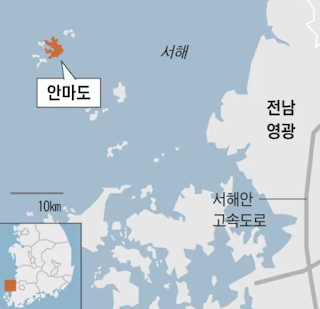Human-Wildlife Conflict Escalates on Anmado Island
Anmado Island's struggle against an overwhelming deer population underscores the challenges of human-wildlife conflict. Residents grapple with damaged crops, disrupted lives, and economic hardships caused by over 1,000 deer that were initially introduced for antler harvesting. Government responses, including potential firearm use, reveal the complexity of balancing environmental preservation, animal rights, and human welfare. The situation prompts discussions on wildlife management and regulations to address the unintended consequences of past introductions and the impact on local communities.
Deer Overpopulation Grips Anmado Island:
- Anmado Island, home to 190 residents, contends with over 1,000 sika and elder deer, causing extensive damage to crops, forests, and ecosystems for the past 30 years.
Damage to Crops and Ecosystems:
- Residents report crop destruction, especially of peppers, sweet potatoes, garlic, and sesame seeds. Deer, known to dig up vegetation, contribute to deforestation, particularly during winter when food is scarce.
National Human Rights Commission's Involvement:
- The National Human Rights Commission engages in discussions to address grievances, proposing actions such as designating Anmado deer as endangered. Debates arise over potential firearm use for population control.
Public Opinions and Regulatory Measures:
- A survey reveals that 70% of respondents consider the deer as wild animals, with 62% supporting various capture methods, including firearms. Public suggestions include using deer as a tourism resource and strengthening penalties for neglecting these animals.
Livestock Classification and Regulatory Challenges:
- Current regulations classify deer as livestock, posing challenges for residents and local authorities to address the overpopulation issue. Deer are considered under the Livestock Hygiene Management Act, restricting actions such as hunting.
Government Response Delay and KEPCO's Involvement:
- The Ministry of Environment and the Ministry of Agriculture and Food initially delay action, citing non-responsibility. KEPCO intervenes after a collective complaint from islanders, proposing a solution that involves a one-year investigation by the Ministry of Environment to assess damage and designate the deer for receivership.
Residents' Economic Hardships:
- Deer overpopulation forces residents to abandon farming, affecting livelihoods that were traditionally based on fishing and agriculture. Attempts to protect crops with netting prove futile against deer with destructive behavior.
Crackdown on Livestock Abandonment:
- The government plans to create regulations penalizing livestock farmers for abandoning animals, addressing a contributing factor to the massive deer population.
Proposed Measures for Population Control:
- The Ministry of Agriculture and Forestry, in coordination with the Ministry of Environment, plans to check deer for infectious diseases and assess environmental damage by October. Infected deer will be culled, while others may be relocated to livestock farms.
Complex History and Recent Hunting Approvals:
- Introduced in the 1980s for antler harvesting, the deer population surged when abandoned in the wild. Recent government measures, including potential firearm use, indicate a shift in addressing the long-standing issue.
Frequently Asked Questions (FAQ):
Q: What are the main challenges faced by residents of Anmado Island due to deer overpopulation?
- A: Residents experience extensive damage to crops, deforestation, disrupted sleep due to deer behavior, and economic hardships.
Q: How does the National Human Rights Commission propose addressing the issue?
- A: Discussions include designating Anmado deer as endangered, potentially allowing population control through firearms, though opinions on this approach vary.
Q: Why are deer classified as livestock, and how does it impact regulatory actions?
- A: Current regulations categorize deer as livestock, restricting actions such as hunting. This classification poses challenges in addressing the overpopulation issue.
Q: What measures are planned to control the deer population?
- A: The government plans to assess damage, check for infectious diseases, and potentially designate deer as a "hazardous wild animal," allowing population control with firearms.
#HumanWildlifeConflict, #DeerOverpopulation, #WildlifeManagement, #LivestockAbandonment, #GovernmentResponse

